10 Questions with British Visual Artist Liz Atkin at the M1 Fringe Festival 2017
PUBLISHED February 17th, 2017 01:31 pm | UPDATED May 18th, 2020 04:55 pm
Having lived with Compulsive Skin Picking disorder for more 20 years of her life, Liz Atkin is an internationally acclaimed visual artist and advocate based in London today. Art has been her greatest tool in battling the demon, and she reimagines the the body-focused repetitive behaviour of skin picking into photographic artworks, charcoal drawings and performances. Her work has been exhibited in the UK, Australia, Singapore, USA and Japan and she’s given public talks for TEDx, Wellcome Collection and at a range of conferences and health events around the world.
Most recently, Liz was in Singapore for the the British Council with the M1 Singapore Fringe Festival, creating #CompulsiveCharcoal drawings and sharing her story at universities, hospitals, and mental health organisations. We sat her down to chat about CSP, inclusivity in the arts, and art as therapy.

Who are your artist influences?
I admire the work of Louise Bourgeois for her unflinching examination of her life. I’m obsessed with the sculptural work and textured paintings on Anselm Kiefer. I love the paintings of Francis Bacon for their visceral drama in life and death. Grayson Perry for his advocacy for mental health and how art can really help us rethink our experiences.
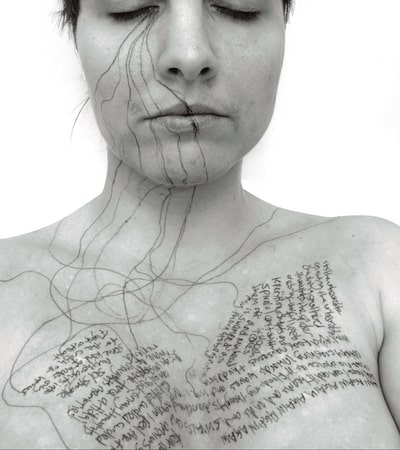
Could you tell us more about British Council’s campaign for inclusivity in the Arts?
I’m really proud and grateful to have come to Singapore for the M1 Fringe Festival, supported by the British Council. The big push happening at the moment for the British Council is about raising awareness for people with mental or physical disabilities, who should be able to feel welcomed in the art community – be it through using art as a cathartic healing tool or the ability to embrace artists of such backgrounds. Sort of to build an equal opportunity playing field for everyone. Art is not simply for those in that scene; it’s something that I believe is intrinsic in all of us. The ability for art to provoke thought and emotion in everyone can be used as a great tool to reach out to people out there who can use it as a form of therapy.
As an artist who is exploring mental health issues but also finding creative approaches to looking after ourselves, it feels like I’m riding a good wave here, in terms of putting my art to good use.
Do you feel inclusivity is an important element in the arts and elsewhere?
Because of the transformative experiences I have had with art, it is now a fully connected part of my life. I teach art and drama in hospitals, hospices, prisons, universities and schools, approaching creativity as a hugely important tool to help others. Art gets in there without language and provides a channel to express some of this stuff. It can be very hard to put into words what it feels like to live with Skin Picking. But I can perhaps find a way to express this through a photograph, and that becomes very cathartic. Art is a powerful tool for us to also focus our minds — I find it to be extremely mindful, soothing, evocative and emotional, all in the same moment! That’s a terrific thing, and it has become something I am passionate about offering to others. Teaching has become a very important part of my life now.
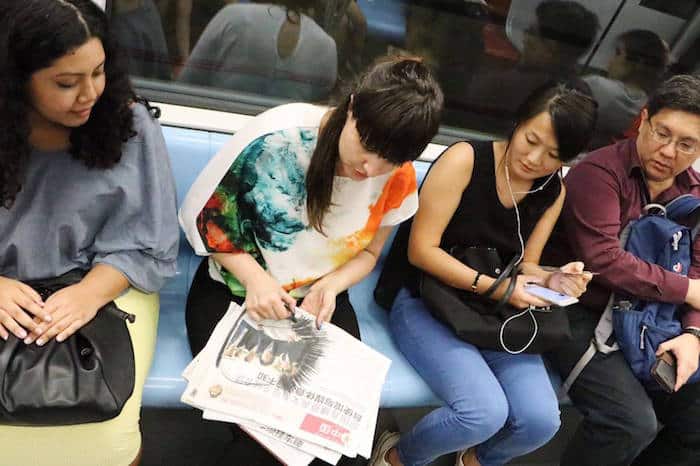
What was your favourite part about your visit to Singapore?
It was one of the most incredible adventures of my life! I absolutely loved the city. The energy, the mix of the old and the new. The food was just wonderful! The lush beauty of the Botanic Gardens blew me away, I will never forget walking through the huge fig trees in the Rainforest section of the gardens…extraordinary. A few Tays later, I went to the Gardens by the Bay which was completely awe inspiring! to experience nature in the midst of the metropolis of the buildings and architecture of Singapore was amazing.
I loved Singaporean people! The warmth and friendship of people I met wherever I went was beautiful. I had no idea how my drawings on the trains were going to be received by Singaporeans; I had been warned not to litter the drawings by leaving them behind, as I sometimes do in London to be found and discovered, since there are laws on littering there. So I was careful to always gift the drawing directly to someone, and there were terrific moments where a person is initially confused to see me drawing, and then broke into the warmest smile of surprise to be handed a free sketch. Little conversations happened everywhere I went and some people even wanted selfies with me. I loved the experience of gifting artworks to people across the city.
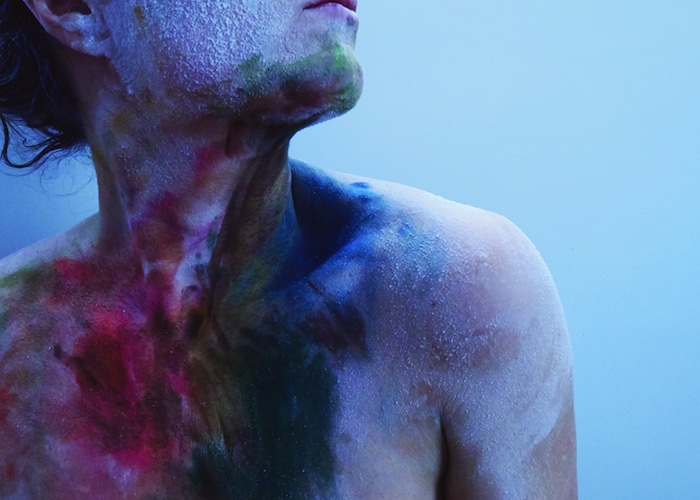
What’s a typical day like for you?
Freelance life gives me such a range of amazing opportunities, no single day is the same. I teach very young children from 18 months to 3 years old, I run my own art classes for 4 – 12 years, teenagers, and adults of all ages. I get to design and make, and play – these energies are wonderful and vibrant. I often teach in set design with Royal Central School of Speech and Drama. I also teach for a yearly programme called Speech Bubbles for Half Moon Theatre – this is a project to support young children with communication and language difficulties.
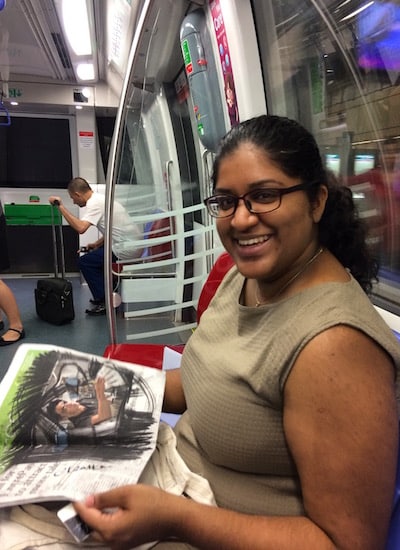
Could you explain more about your condition?
Compulsive Skin Picking (CSP), or Dermatillomania is a complex disorder, it’s much more than just a bad habit. Picking at skin is a very normal human behaviour, but CSP is categorised by the repetitive picking at skin to the extent that significant damage is caused, and it impacts on a person’s daily functioning. It’s not known why humans develop this disorder. For some, environmental factors influence the development of skin picking or hair pulling disorders, others have hereditary links where family members may pick. CSP may start by picking at an existing blemish, or even at healthy skin, in an attempt to smooth it out or make it feel more ‘normal’ but the picking leads to scabs, infections, and eventually scarring which causes an awful vicious cycle where the behavior loops.
There is currently no cure, but a lot of important research into these illnesses is currently happening in the US. In the Diagnostic and Statistical Manual of Mental Disorders, Fifth Edition, the diagnostic criteria includes: recurrent skin picking that results in skin lesions, repeated attempts to stop the behaviour, the symptoms cause clinically significant distress or impairment, the symptoms not being caused by a substance or medical, or dermatological condition and the symptoms not being better explained by another psychiatric disorder.
So…what’s it like living with CSP?
I would experience an urge to pick, and this could affect different parts of my body, my face, my hands, my back and shoulders, my arms, my feet. Many people think it would hurt, but actually it’s the opposite. That urge to pick could be overwhelming, and although the damage could be very severe, the gratification to pick could cause me to carry out the behavior over and over again. Sometimes I’d zone out and lose hours picking in front of the mirror. The effects were extremely hard to cope with, not just the marks, wounds, and scars, but the guilt and shame of the disorder dominated my life. It also developed into something I did subconsciously, some nights I would pick until the early hours of the morning, I would even pick in my sleep.
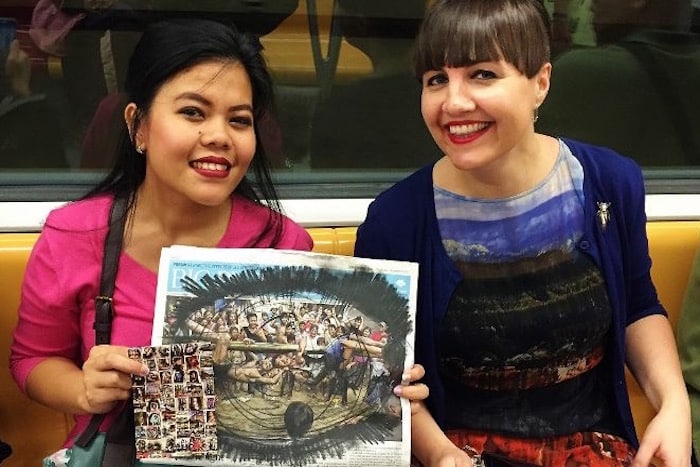
How did you decide to use art as therapy? How did you begin your art career?
I suffered in silence for a very long time, probably 20 years or more, hiding the behavior every day. I masked and covered the illness from those closest to me, wearing clothes that concealed the parts of my body covered in scabs and scars, and using make-up to mask it on my face. The guilt, shame, embarrassment and anxiety was terrible and I had no choice really but to try and help myself because it was destroying me. So what do you do with a disorder that is both a conscious urge and an unconscious behaviour? That’s where the journey with art began.
I had always had a fascination for the body and performance, so I studied theatre. This led me to complete a BA in Drama, and then ten years later, a Masters in Dance.
During the MA in dance, I began exploring and studying my disorder, I’d never had therapy at that point, so a class exercise looking at everyday movement patterns as choreography led me to look at the body-focused repetitive behavior of my skin picking. Over the course of two years I slowly began to make photographic artworks directly about how it felt to live with this disorder. I’ve been working with textural materials like latex, clay, acrylic paint to transform the skin over the last 10 years. It has helped me recover and learn to come to terms with the illness.
Drawing has become one of the best ways of all to channel the disorder and transform it.
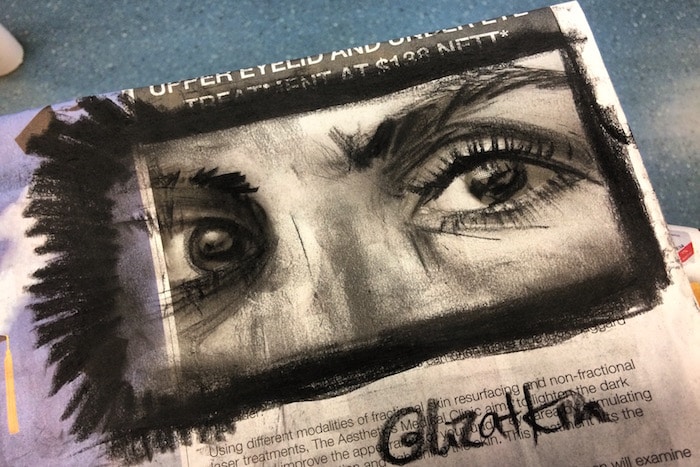
#CompulsiveCharcoal began 18 months ago by accident. A friend gave me a box of charcoal sticks as a present and to stave off panic attacks and keep me focused during long commutes on the London Underground, I started drawing in sketchbooks. But during one of those trips, I ran out of pages, so I picked up and drew on a discarded copy of the Metro free newspaper that was on a seat beside me. I posted a photo of the drawing on Instagram, it generated a lot of positive reactions. It’s a kind of graffiti recycling; drawing onto newspapers and upcycling them.
Now, it’s a thing I do on newspapers, wherever I am in the world. I draw on planes, trains and buses. This isn’t just some kind of art project for the sake of it. Whenever I am sedentary, skin picking is something my hands will do automatically so to stop that from happening, I draw.
Most recently, this has taken me to the other side of the world, to the M1 Singapore Fringe Festival. My two-week trip was sponsored by British Council, and I created more than 300 free #CompulsiveCharcoal drawings, and gave a series of public talks on Skin Picking and art at National University of Singapore, Lasalle College of the Arts, and Khoo Teck Puat Hospital. A film about my trip by Channel News Asia was viewed 150,000 in the first 24 hours.
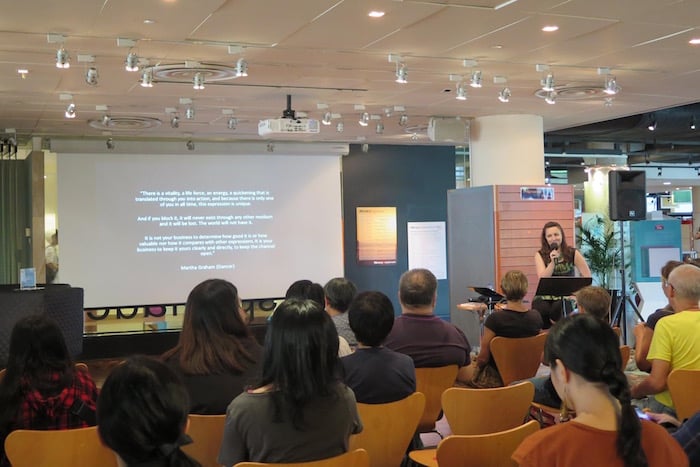
I had no idea what an incredible tool drawing would be to stop the CSP, but it’s become the greatest solution. Someone told me recently the drawings I create even look very itchy, which seemed like a very appropriate way to describe them! They are very quick, each one takes just one minute, the speed and energy of the mark-making is absolutely akin to the skin picking. It helps me refocus my hands and fingers, be really present in the moment and transform the urge of skin picking into a different repetitive action. Since I don’t really need the drawings (I just need to do them), I began handing them to curious passengers on the London Underground who’d caught my eye and obviously wondered why I was furiously drawing at that speed in the middle of a packed carriage.
I also realised that many people would chat to me on the tube, little conversations about mental health were happening with strangers about these drawings. I do up to 60 a day; in a year, i’ve given away up to 10,000 free drawings…That’s 10,000 mental health conversations and from that, many thousands of people who may live with, or know someone who lives with CSP. Every drawing was a moment of connection, of advocacy for mental health, and a chance to let others know I am drawing because of Compulsive Skin Picking and i now carry free postcards to explain the disorder. One encounter, whether that’s in real life, or on social media like Twitter or Facebook, could cause a powerful ripple effect.
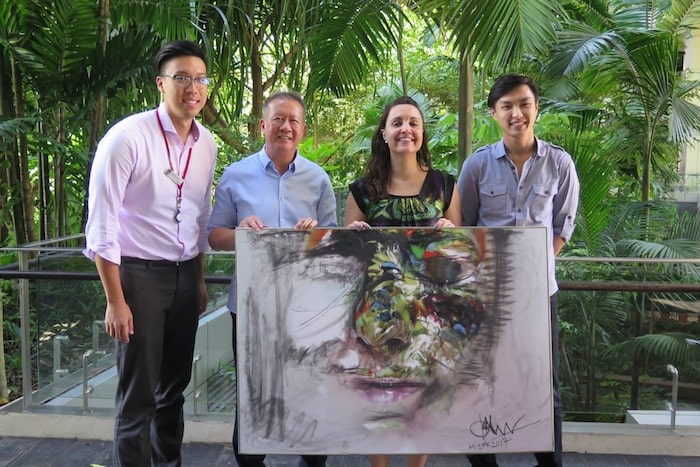
Much of this has been a happy accident. I didn’t train as an artist, I certainly had no idea how transformative art was going to be in my life. Much of it has evolved organically through the act of doing it. Because of the transformative experiences I have had with art, it is now a fully connected part of my life. I teach art and drama to all ages. I work in hospitals, hospices, prisons, universities and schools, approaching creativity as a hugely important tool to help others. Art is my greatest tool for recovery.
What’s next in store for you?
I will be creating my free #CompulsiveCharcoal drawings to patients, staff and visitors to Guys and St Thomas’s hospital in London as part of Breathe Arts in Health Research lunchtime concert this week. This initiative is to bring music, art and magic to the wards of the hospital to provide a creative intervention in the hospital environment.
In July this year, I will be creating one of my large performative drawings for Finding Lines a group exhibition at Derby Museum in the UK, this show will include sketches by artists such as Henry Moore, Frank Auerbach and Maggi Hambling…some of my absolute art heroes!! The show will also include a wall of my #CompulsiveCharcoal drawings.
